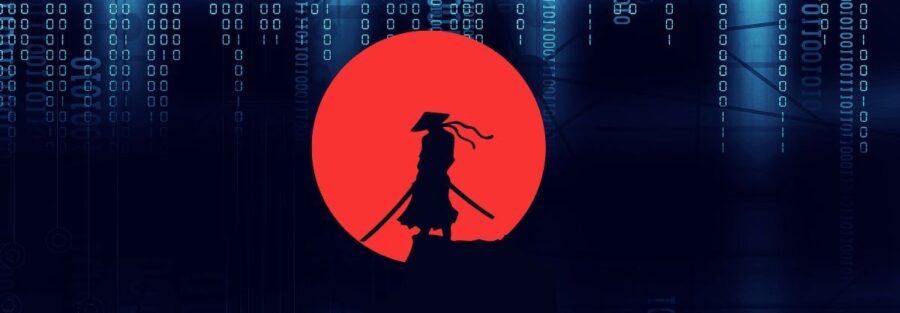Cyber Leadership
Sun Tzu’s “The Art of War,” written over 2,500 years ago, remains one of the most influential texts on strategy and leadership. While it was originally intended for military generals, its timeless wisdom can be applied to various fields, including cybersecurity. In this blog post, we’ll explore the key lessons from “The Art of War” and how they can be applied to cyber leadership to navigate the complex and ever-evolving landscape of information security.
Understanding “The Art of War”
“The Art of War” is a treatise on military strategy and tactics, emphasizing the importance of adaptability, intelligence, and strategic planning. Its principles are rooted in understanding the nature of conflict, the importance of preparation, and the need for flexibility in response to changing circumstances. These concepts are directly relevant to cyber leadership, where the stakes are high, and the environment is constantly shifting.
Key Lessons from “The Art of War” for Cyber Leadership
Know Yourself and Know Your Enemy
Sun Tzu famously said, “If you know the enemy and know yourself, you need not fear the result of a hundred battles.” In cybersecurity, this means understanding your organization’s strengths and weaknesses, as well as the threats and adversaries you face.
Applying This Lesson
- Conduct Regular Assessments: Regularly assess your organization’s security posture, identifying strengths, vulnerabilities, and areas for improvement.
- Understand Threats: Stay informed about the latest threats, attack vectors, and tactics used by cyber adversaries. This includes monitoring threat intelligence sources and conducting threat modeling exercises.
- Develop Self-Awareness: Foster a culture of self-awareness within your team, encouraging continuous learning and improvement. This involves understanding the capabilities and limitations of your cybersecurity tools, processes, and personnel.
Strategic Planning and Preparation
Sun Tzu emphasized the importance of planning and preparation, stating, “The victorious strategist only seeks battle after the victory has been won.” In cybersecurity, proactive planning and preparation are crucial for effective defense and incident response.
Applying This Lesson
- Develop a Comprehensive Strategy: Create a robust cybersecurity strategy that aligns with your organization’s goals and objectives. This strategy should include risk management, incident response, and disaster recovery plans.
- Invest in Training: Ensure that your team is well-trained and equipped to handle various cyber threats. This includes regular training sessions, simulations, and exercises to test and refine their skills.
- Implement Strong Defenses: Deploy advanced security technologies and best practices to protect your network, systems, and data. This includes firewalls, intrusion detection systems, encryption, and multi-factor authentication.
Flexibility and Adaptability
One of Sun Tzu’s key principles is the need for flexibility and adaptability in the face of changing circumstances. He stated, “In the midst of chaos, there is also opportunity.” Cybersecurity leaders must be agile and responsive to emerging threats and changing conditions.
Applying This Lesson
- Embrace a Proactive Mindset: Adopt a proactive approach to cybersecurity, anticipating potential threats and vulnerabilities before they can be exploited.
- Foster a Culture of Agility: Encourage a culture of agility within your team, empowering them to adapt quickly to new challenges and changes in the threat landscape.
- Continuous Improvement: Regularly review and update your cybersecurity policies, procedures, and technologies to ensure they remain effective and relevant.
Deception and Misdirection
Sun Tzu often spoke of the value of deception and misdirection in warfare, advising, “All warfare is based on deception.” In cybersecurity, this principle can be applied to confuse and mislead attackers, making it harder for them to achieve their objectives.
Applying This Lesson
- Implement Deception Technologies: Use technologies such as honeypots and honeynets to lure attackers away from valuable assets and gather intelligence on their tactics.
- Obfuscate Data: Employ techniques like data masking and tokenization to protect sensitive information and make it less useful if compromised.
- Vary Defensive Tactics: Regularly change your security measures and configurations to prevent attackers from gaining a clear understanding of your defenses.
Unity and Leadership
Sun Tzu highlighted the importance of unity and strong leadership, stating, “The skillful leader subdues the enemy’s troops without any fighting.” Effective cyber leadership involves uniting your team around a common purpose and providing clear, decisive guidance.
Applying This Lesson
- Build a Cohesive Team: Foster a sense of unity and collaboration within your cybersecurity team. Encourage open communication, trust, and mutual respect.
- Lead by Example: Demonstrate strong leadership by setting a positive example, making informed decisions, and taking responsibility for your actions.
- Inspire and Motivate: Inspire your team with a clear vision and purpose, and motivate them to strive for excellence in their roles.
Recognizing and Overcoming Challenges
While the lessons from “The Art of War” provide valuable guidance, cybersecurity leaders must also recognize and overcome specific challenges unique to the digital realm.
Rapidly Evolving Threat Landscape
The cybersecurity threat landscape is constantly evolving, with new threats and attack vectors emerging regularly. Staying ahead of these threats requires continuous monitoring, intelligence gathering, and adaptation.
Strategies to Overcome This Challenge
- Invest in Threat Intelligence: Leverage threat intelligence services and platforms to stay informed about the latest threats and vulnerabilities.
- Adopt a Layered Defense Approach: Implement a multi-layered security strategy that includes preventive, detective, and responsive measures to address various types of threats.
- Collaborate with Industry Peers: Participate in industry forums and information-sharing initiatives to learn from others’ experiences and gain insights into emerging threats.
Resource Constraints
Many cybersecurity teams operate with limited resources, making it challenging to implement comprehensive security measures and respond effectively to incidents.
Strategies to Overcome This Challenge
- Prioritize Risks: Conduct a risk assessment to identify and prioritize the most critical threats and vulnerabilities, focusing resources on addressing these areas first.
- Automate Where Possible: Use automation and orchestration tools to streamline repetitive tasks and improve efficiency, freeing up resources for more strategic activities.
- Leverage Managed Services: Consider partnering with managed security service providers (MSSPs) to augment your capabilities and gain access to specialized expertise.
Maintaining Compliance
Compliance with industry regulations and standards is a critical aspect of cybersecurity, but it can be complex and time-consuming to manage.
Strategies to Overcome This Challenge
- Implement Compliance Frameworks: Adopt established compliance frameworks (e.g., NIST, ISO 27001) to guide your security efforts and ensure alignment with regulatory requirements.
- Regular Audits and Assessments: Conduct regular audits and assessments to identify compliance gaps and implement corrective actions.
- Stay Informed: Keep abreast of changes in regulations and standards to ensure your security practices remain compliant.
The Importance of Understanding “The Art of War” in Cyber Leadership
Understanding and applying the principles of “The Art of War” in cyber leadership is essential for several reasons:
- Strategic Advantage: By adopting a strategic mindset, cyber leaders can anticipate and mitigate threats more effectively, gaining a competitive edge over adversaries.
- Resilience and Adaptability: The principles of flexibility, preparation, and adaptability help build resilient teams and systems capable of withstanding cyberattacks.
- Unified Vision: Strong leadership and unity foster a cohesive team environment, enhancing collaboration and overall performance.
- Proactive Defense: Emphasizing proactive defense measures, such as deception and misdirection, helps stay one step ahead of attackers.
Sun Tzu’s “The Art of War” offers timeless wisdom that can be effectively applied to cyber leadership. By
understanding and implementing its principles, cybersecurity leaders can navigate the complexities of the digital battlefield, anticipate and counteract threats, and build resilient, high-performing teams. Embrace the lessons of “The Art of War” to enhance your strategic thinking, leadership skills, and overall cybersecurity posture, and lead your organization to victory in the ever-evolving world of information security.



